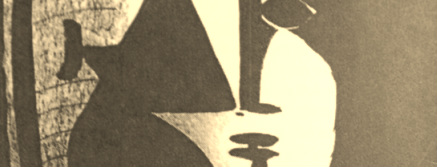Art and Science
On the Aesthetic Whole: Shaping the Story
We have explored context, voice, relationship, and emergent themes, offering descriptions of their contours, purpose, and expression—in the field and in the text. Although we examined each element separately—as if they were discrete and non-overlapping—our discussions pointed to the interactions among them: the way, for example, relationships are created and sustained in (as well as shaped by) a particular context, or the way a researcher’s voice interprets and constructs the emergent themes. Just as we dealt with each element separately, so as to discern it more clearly and examine it more deeply, we now turn to the ways in which each element is part of a larger whole—the aesthetic whole. We stitch the pieces together to create a whole cloth, recognizing that the gestalt is much more than the sum of its parts. How do we construct the whole? How do we give it structure, form, and coherence? How do we make judgments about the composition? What should be included and excluded? How much should our decisions and choices be guided by empirical considerations? How much by aesthetic sensibilities? In developing the aesthetic whole we come face to face with the tensions inherent in blending art and science, analysis and narrative, description and interpretation, structure and texture. We are reminded of the dual motivations guiding portraiture: to inform and inspire, to document and transform, to speak to the head and to the heart. How do we create a document that is both authentic and evocative, coded and colorful? Very few social science researchers have tried to seriously describe the process of creating the gestalt. Nor have they offered clear strategies for constructing the aesthetic whole. Qualitative researchers have focused, ordered, and classified their data around emergent themes, revealing the ongoing iterative process that occurs between the collection of grounded data and the generation of theory. But researchers have given less attention to articulating the process of moving from selecting the threads (the emergent themes) to weaving the tapestry (the portrait). This is understandable. The act of creating the gestalt is a less codified and delineated activity than the identification and naming of emergent themes. It is both systematic and creative, structured and organic, disciplined and intuitive. In their volume on ethnography, Goetz and LeCompte (1984) speak of the ethnographer as a puzzle builder assembling the pieces into a coherent pattern within the frame. The puzzle building they describe is related to the development of a “credible” and “believable” story. When we speak about creating a believable story, we inevitably must consider the whole—not just the pieces of the puzzle but the assemblage. In creating the aesthetic whole, then, we work to construct a credible story—putting pieces together to create a logical coherence, but being careful not to impose a facile consistency or a simplistic logic that will misrepresent the complex reality we are documenting. In constructing the aesthetic whole, the portraitist seeks a portrayal that is believable, that makes sense, that causes that “click of recognition.” We refer to this “yes, of course” (instead of a “yes, but”) experience as resonance, and we see the standard as one of authenticity. The portraitist hopes to develop a rich portrayal that will have resonance (in different ways, from different perspectives) with three audiences: with the actors who will see themselves reflected in the story, with the readers who will see no reason to disbelieve it, and with the portraitist herself, whose deep knowledge of the setting and self-critical stance allow her to see the “truth value” in her work. How does the portraitist achieve resonance? How do we construct a portrait—an aesthetic whole—that resounds with authenticity? Goetz and LeCompte speak of arranging the pieces of a puzzle. We might think of stitching together a colorful quilt. My favorite metaphor refers to weaving a tapestry because the image allows for various configurations of color, texture, and design, as well as a clear structure of overlapping threads (the warp and the weft). The metaphor also embraces other powerful images related to portraiture: the interweaving or combining of elements into a complex whole (weaving the incidents into a story), or contriving something complex and elaborate (weaving a tale), or interlacing strands or strips of material (weaving a basket), or spinning (a web). The weaving metaphor, then, reflects the elements of structure, texture, color, design, and the images of spinning a tale, telling a story, shaping a narrative. The portraitist constructs the aesthetic whole—weaves the tapestry—while attending to four dimensions: the first is the conception, which refers to the development of the overarching story; second is the structure, which refers to the sequencing and layering of emergent themes that scaffold the story; third is the form, which reflects the movement of the narrative, the spinning of the tale; and last is the cohesion, which speaks about the unity and integrity of the piece.
|



